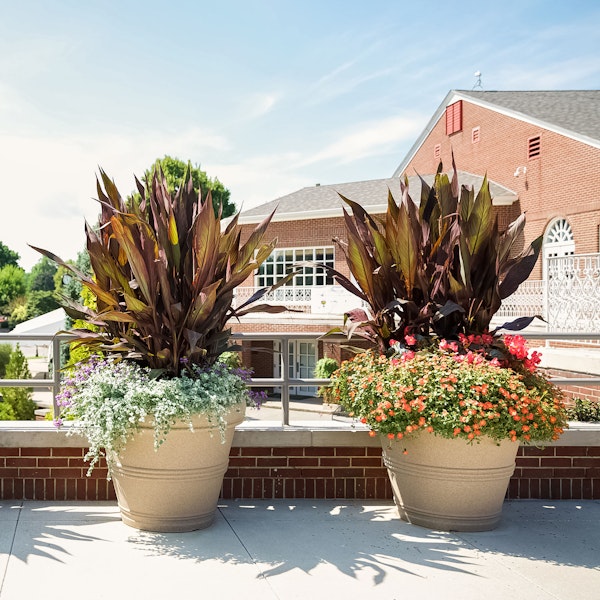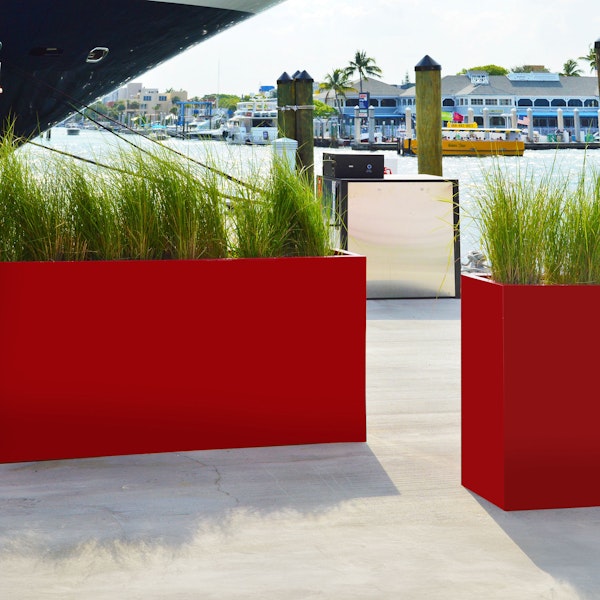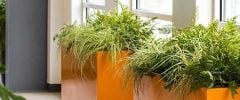Lessons Learned: Best Practices for Outdoor Planter Installations

During a past outdoor planter installation for a client of mine, I faced many unexpected challenges. From the moment I started working on the client’s brick patio, it was clear that this project wouldn’t be as straightforward as I had hoped. I recently reflected on the experience and realized there are a few key lessons worth sharing to help others avoid the same challenges.
Timing Outdoor Installations for Success
Unless your service area has fairly consistent year-round weather, the season of installation plays a crucial role in the success of outdoor plant arrangements. For example, installing container gardens in Florida during the hot summer months, especially without some sort of irrigation, is not ideal. I experienced this firsthand when the foliage in my client’s outdoor plant displays required heavy watering several times a week, yet many of the flowering plants still struggled to survive. Eventually, they began to recover, but in hindsight, installing the planters in the cooler spring or fall months or recommending a drip irrigation system to the client would have been a better approach. To save time, labor, and unnecessary stress, it’s essential to plan outdoor installations wisely.


Choosing the Right Foliage for Outdoor Planters
The amount of sunlight and shade outdoor containers receive throughout the day is the most important factor in selecting the right foliage. Just like indoor plants, we select outdoor foliage based on light levels, but there’s one key difference with outdoor settings—structures like overhangs or nearby buildings can cast shadows throughout the day, leaving sun-loving plants in the shade. Observing the container area at different times of the day is the best way to determine the amount of sunlight the area will receive and choose the correct type of plants for the space.
Since I had serviced this client’s location for several years, I was familiar with the lighting conditions and high winds experienced on the patio. And although the plants had recovered from the initial struggle with the heat, they continued to face challenges because I went against my better judgment and used the delicate foliage my client requested. Windy conditions eventually caused the leaves to look shredded, as if they had been cut with scissors.
After I replaced the damaged plants, the accent foliage began going downhill—hardy plants wouldn’t flower and new growth turned brown. I quickly realized I had overlooked the patio’s proximity to a brackish river, which was causing salt damage. Unfortunately, every plant died. When choosing replacement plants, I was careful to select only salt-tolerant varieties to avoid repeating the same mistake.
Planning Exterior Plant Displays That Thrive
Unlike indoor containers where light and atmosphere are fairly consistent, outdoor containers require more careful consideration. Factors like sunlight, weather, and other environmental conditions play a significant role in plant health and growth. By evaluating these elements before installation, outdoor planter displays can be just as healthy and vibrant as indoor arrangements.
This project came with its fair share of challenges and required more work than I originally expected, but even with the setbacks, it was a great learning experience. It reminded me that no matter how familiar a location might seem or how experienced you are, there are always factors that can catch you off guard. Every project is a chance to learn, and sometimes the toughest ones teach the most valuable lessons.
You May Also Like
Leave a Reply
You must be logged in to post a comment.


















